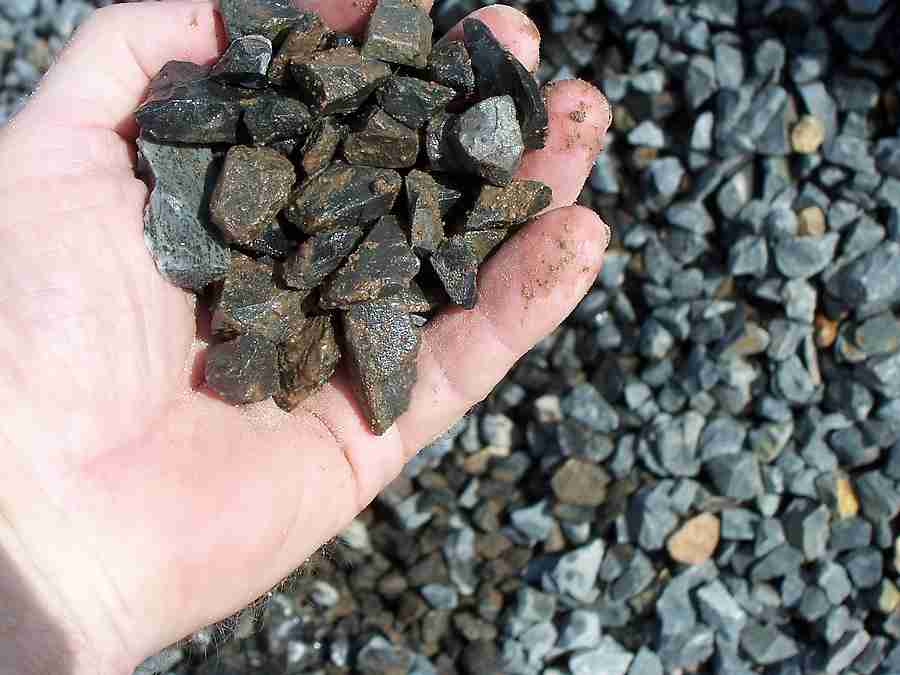Crushed stone, also known as angular rock, is a type of building aggregate that is normally made by mining a suitable rock deposit and then crushing the extracted rock to the desired size. It differs from gravel, which is formed by natural weathering and erosion processes and has a more rounded appearance. The fundamental material for macadam road building is angular crushed stone, which is held together by the interlocking of the angular faces of the individual stones. Riprap, railroad track ballast, and filter stone can all be made from crushed natural stone without the need of a binder. It can be utilised in a composite material like concrete, tarmac, or asphalt concrete in conjunction with a binder.
Crushed stone is a primary basic raw material used in building, agriculture, and other sectors, and is one of the most easily accessible natural resources. The crushed stone business, despite the low value of its basic products, is a significant contributor to and indication of a country’s economic well-being.

Crushed stone demand is mostly driven by the level of construction activity and, as a result, the demand for construction materials. The world’s stone resources are substantial. Many geographical areas have a scarcity of high-purity limestone and dolomite suited for specialised applications. Sand and gravel, as well as slag, are used as crushed stone alternatives for road construction. Sand and gravel, iron and steel slag, sintered or expanded clay or shale, and perlite or vermiculite are all good substitutes for crushed stone in construction aggregates.
In China, a barge transporting crushed stone. Crushed stone is being used to lay the foundation for a road surface. Crushed stone is a low-cost product with a high volume. The industry is fiercely competitive, with numerous businesses catering to local or regional markets. Labor, equipment, energy, and water costs, as well as the price of complying with environmental and safety laws, are the key factors that influence production costs.
These expenses vary based on where the deposit is located, the type of deposit, and the amount and type of items generated. The average by weight value of crushed stone is one of the lowest of all mineral commodities. In 1970, the average unit price was US$1.58 per metric tonne, f.o.b. plant; by 1990, it had risen to US$4.39 per metric tonne, f.o.b. plant.
Read Also: How Gemstones Can Change Our Lives
During the same time span, however, the unit price in constant 1982 dollars ranged between US$3.48 and US$3.91 per metric tonne. The key reason for keeping prices at this level was higher productivity, which was achieved through increased use of automation and more efficient equipment. The delivered price of crushed stone is heavily influenced by transportation costs. The cost of transporting crushed stone from the plant to the market is frequently equal to or greater than the product’s sale price at the facility of shop Natural Stone Paving near me.
Crushed stone is typically sold locally due to the high expense of transportation and the enormous quantities of bulk material that must be supplied. The broad dispersion of quarries, which are typically placed near densely inhabited areas, is due to the high cost of transportation. Crushed stone quarries are being relocated farther away from end-use areas due to rising land values and local environmental concerns, raising the price of delivered material. Economies of scale, which may be obtained if fewer, larger enterprises served greater marketing areas, would almost certainly not be enough to compensate for the higher transportation costs.
According to the United States Geological Survey, 1.72 billion tonnes of crushed stone worth $13.8 billion were sold or utilised in 2006, with 1.44 billion tonnes utilised as building aggregate, 74.9 million tonnes for cement production, and 18.1 million tonnes for lime production. The entire amount of crushed marble sold or utilised was 11.8 million tonnes, with the majority of it being finely powdered and used as calcium carbonate.

As the editor of the blog, She curate insightful content that sparks curiosity and fosters learning. With a passion for storytelling and a keen eye for detail, she strive to bring diverse perspectives and engaging narratives to readers, ensuring every piece informs, inspires, and enriches.









